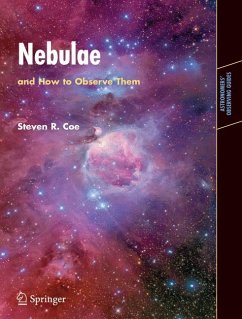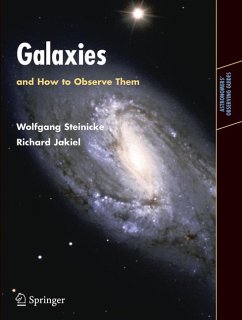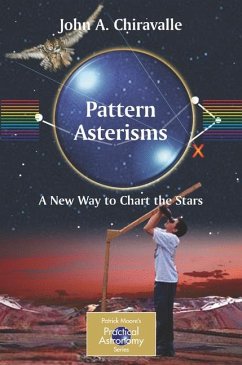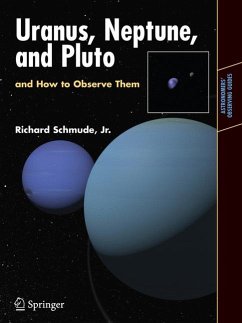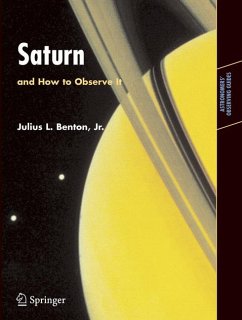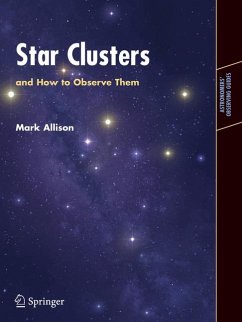
Star Clusters and How to Observe Them (eBook, PDF)

PAYBACK Punkte
14 °P sammeln!
Star clusters are among the most spectacular objects for amateur astronomers to observe and image. They represent the beginning, the present and the future of the universe, from sparse open clusters containing only a dozen stars, to giant globular clusters, each replete with a million suns.Part one of this detailed book provides a comprehensive review of star clusters - including open, globular, extragalactic, and even cluster remnants - along with their evolution and physics.Part two is about observing. The larger clusters can be observed through the most basic equipment - normal binoculars o...
Star clusters are among the most spectacular objects for amateur astronomers to observe and image. They represent the beginning, the present and the future of the universe, from sparse open clusters containing only a dozen stars, to giant globular clusters, each replete with a million suns.
Part one of this detailed book provides a comprehensive review of star clusters - including open, globular, extragalactic, and even cluster remnants - along with their evolution and physics.
Part two is about observing. The larger clusters can be observed through the most basic equipment - normal binoculars or budget telescopes - but Mark Allison talks about instrumentation and accessories, for observers from beginner to expert. Finally there is an observing guide and a comprehensive observing list for a wide range of telescope apertures.
This one book provides all you need to observe star clusters, and to understand the many and varied objects that fall under this classification.
Part one of this detailed book provides a comprehensive review of star clusters - including open, globular, extragalactic, and even cluster remnants - along with their evolution and physics.
Part two is about observing. The larger clusters can be observed through the most basic equipment - normal binoculars or budget telescopes - but Mark Allison talks about instrumentation and accessories, for observers from beginner to expert. Finally there is an observing guide and a comprehensive observing list for a wide range of telescope apertures.
This one book provides all you need to observe star clusters, and to understand the many and varied objects that fall under this classification.
Dieser Download kann aus rechtlichen Gründen nur mit Rechnungsadresse in A, B, BG, CY, CZ, D, DK, EW, E, FIN, F, GR, HR, H, IRL, I, LT, L, LR, M, NL, PL, P, R, S, SLO, SK ausgeliefert werden.




